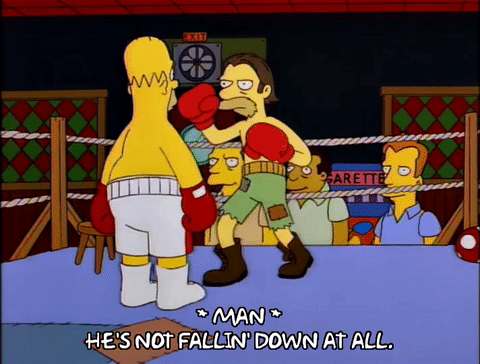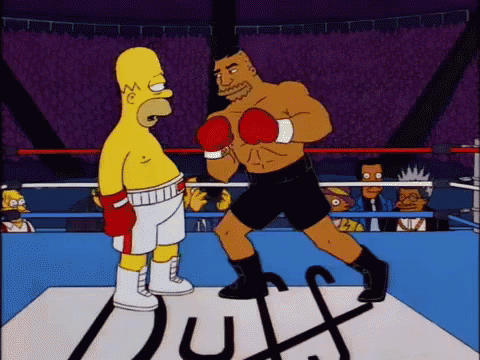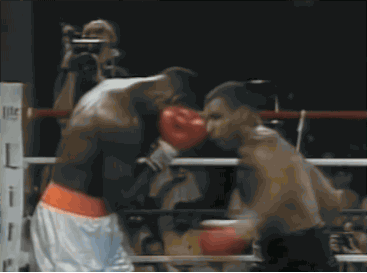The Name Game
A fight to get it right
Ok, so we have a vision and goal, (“to explore creativity and help others be more creative”), along with some objectives and a simple plan for 2023.
Now, time for the name.
This is the ever entertaining, highly opinionated, political and legal minefield of naming your creation. It’s a contact sport with many rules, most of which can and should be broken.
Sometimes the name game can go on forever, round after round, back and forth, tie break after tie break with no clear winner, only to end up against the ropes or exactly where you started.


Other times, it’s over in a flash, the winner is crowned before even entering the ring, it was a knockout in the first round…and occasionally it’s just rigged from the beginning, three rounds, the whole thing purely for entertainment purposes (you might have been in those workshops!).


Either way, the name game is today’s main event; what follows are some thoughts on why it’s important to fight for the right name and some tactics for landing a killer name blow.
Let's start by laying out why a name is important and what it should be doing for you, regardless of the subject matter.
Firstly, a name gives meaning to its subject, it should portray a feeling, either an emotion or a function of what you’re trying to communicate to others. Secondly, you must consider how a name sounds when spoken (the tone), and finally how it looks when written.
These three elements make up the Holy Grail of any brand development, of which a name is a critical component. I don’t care if you are naming a sub-range of a billion-dollar brand, a start-up business, a podcast/blog or a child (and very recently I added the latter to my résumé), the rules and the way to play the game are essentially the same.
When done well, a name combined with a great creation can stand alone, becoming a verb, “to google”, a noun “Kleenex” or an icon, “Beyoncé”.
There are many ways to attack the name game, but as with any creative process it’s good to align a few decision-making criteria up front. How detailed you’d like to get here is really down to you.
Make this as objective as possible, list them and use them to help you converge on your winning idea, also…if it’s a collaborative exercise, give everyone a veto card (this is especially important when naming children, use it wisely!).
The rules for the CREO name game were the following…
It must communicate “creativity”
It must be short, no more than 5 letters and only 2 syllables (easier to fit in thumbnails etc)
It must be easy to pronounce (will need to say it on a podcast!)
It should be either abstract or suggestive (it’s easier to find domains/social handles etc.)
There are also a number of different naming approaches & constructs that can help in the early divergent stage, the part where there is “no bad idea”, of which there are always plenty!
Adding some structure to this exercise can also help you be more divergent in your thinking, giving you a better opportunity of creating something unique.
Many agencies will have their bespoke process, but I think this great post, courtesy of Rob Meyerson, on https://howbrandsarebuilt.com/types-of-brand-names/ shows a simple table that covers the basis of naming approaches and constructs with some examples. Take a moment to digest it…
At this point a dictionary, thesaurus and google translator are your best friends. Get yourself a cup of coffee or something stronger and off you go.
With CREO, I was fortunate enough to land this blow in the early rounds of my internal fight, it ticked all the boxes of my criteria and I really liked that it means “I create” in Latin because as a classical language it alludes to the origins of the word, makes it feel slightly more philosophical and historical, which gives more meaning and context for me to explore what creativity is and how it makes us human.
Now, whether others see that or read into it is another question, but at least that’s my rationale.
(If you were wondering, some other options were CRE8, CREA, HUU, MAYK, CRYATE, KREATE, KREO, KREA…)
As for the way CREO looks and the tone, well, it’s a fairly symmetrical word and visually pretty balanced which lends itself well to being designed. The tone is quite soft, thoughtful, maybe a bit mysterious? “CRE’OOOh…the magic of creativity!”
I could keep going, but you get the idea; build meaning into your name without overcomplicating it. This is a trap that creatives can fall into, and I guarantee your client, stakeholder or partner will have glazed over by point 3 of your rationale, so don’t overdo it!
Now even though very few people have the patience to read that deeply into your name, do not underestimate the importance of taking the time to thrash out the meaning for yourself or your team.
Those details matter and being able to explain them simply takes time. These simple explanations will drive engagement, they show you care about details and it can help align others to your creation. Just know your audience!
Finally, the most important thing you can do in naming anything is to go wide quickly and then beat those options to death.
Run them through your criteria, aggressively cull and then live with the top 5. Test them out on friends (you can always ignore their answers), say them out loud as much you can, write them down and design them into every context or iteration they might exist in.
Don’t forget to check if it means something inappropriate in another language (made that mistake!) and of course if you happen to be naming your newest family member, please, for their sake, think of all the ways you could bully them if you were a little sh*t in the playground.
The tricky thing with naming is there are lots of rules and tactics, but really there isn’t a right or a wrong answer. However, if you do swing a haymaker and connect, having a distinctive, unique and eventually iconic name can make all the difference: that is, after all, the aim of the game.






🙌🙌
Tom, this post reminds me of a session in Bristol where an agency walked us through names for a new product using a specific format. It was good for a laugh. BTW, in Spanish Creo means I think.